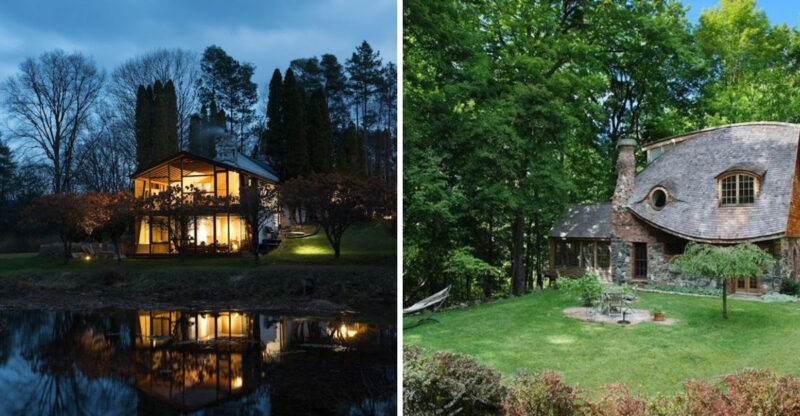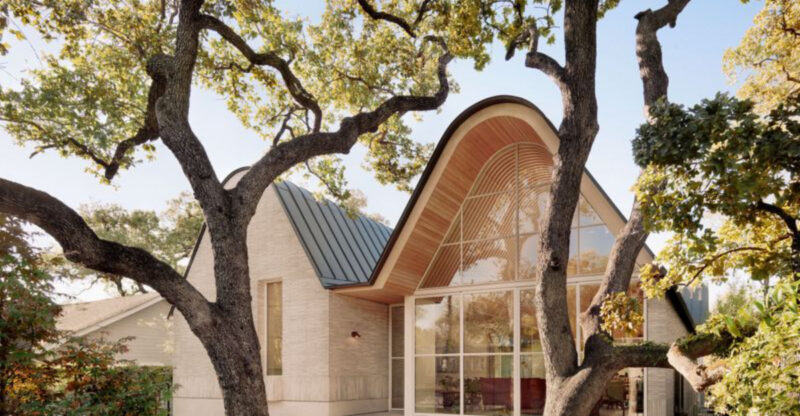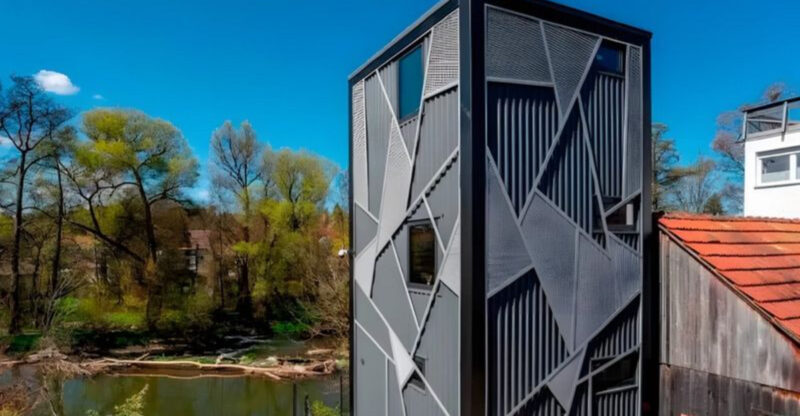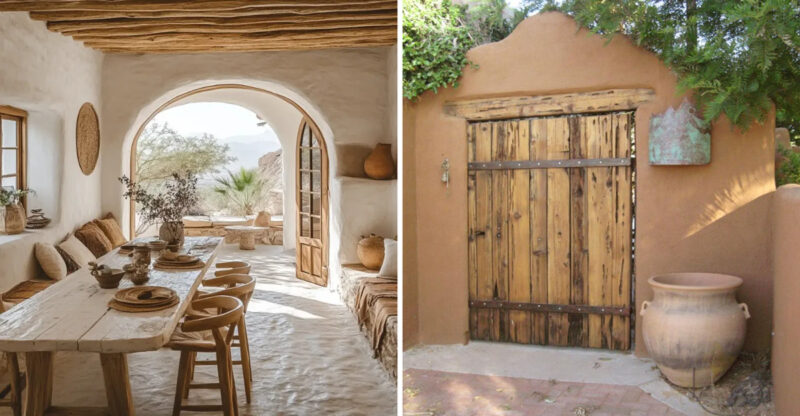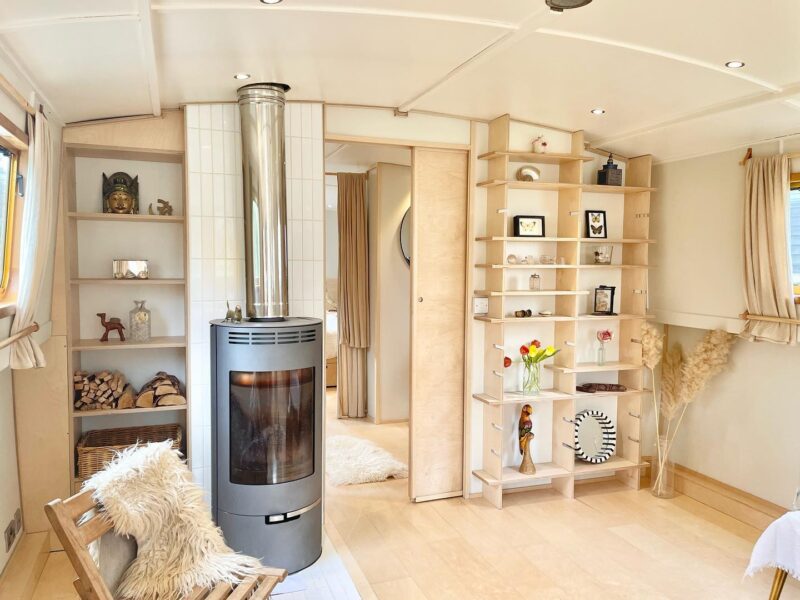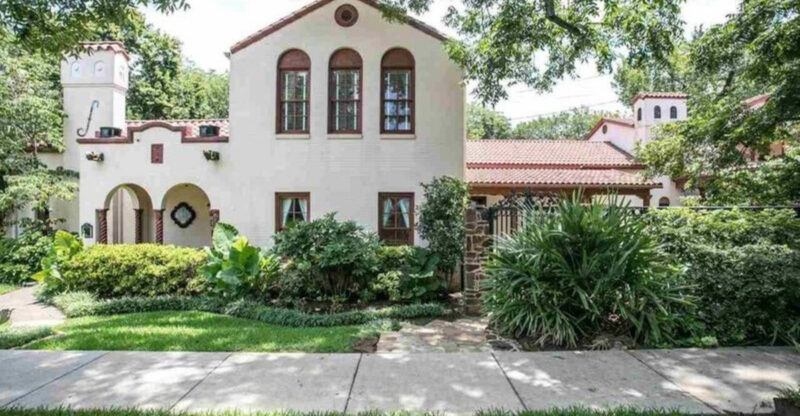20 Grand Connecticut Mansions Built By The State’s Wealthiest Families
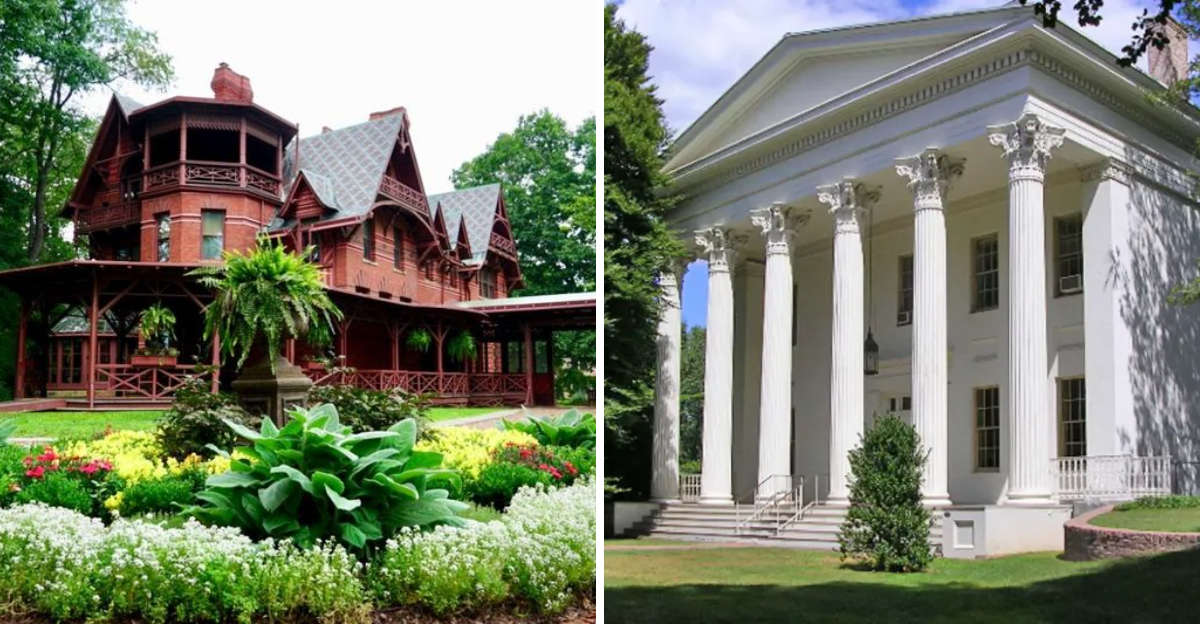
Connecticut’s landscape is dotted with magnificent mansions that tell stories of America’s industrial boom and the families who shaped the state’s history. These architectural treasures represent the height of wealth and influence during the Gilded Age through the early 20th century.
From coastal estates to Hartford landmarks, these homes offer visitors a glimpse into Connecticut’s rich past and the lavish lifestyles of its most prominent citizens.
1. Lockwood-Mathews Mansion – Norwalk
Built in 1864 by railroad tycoon LeGrand Lockwood, this 62-room Victorian mansion was one of America’s first “chateaux” and cost an astounding $2 million (equivalent to $32 million today).
The mansion showcases pioneering technology including gas lighting, indoor plumbing, and central heating. After Lockwood’s financial ruin following the 1869 Gold Panic, banker Charles Mathews purchased the property, preserving its grandeur for future generations.
2. Wadsworth Mansion – Middletown
Colonel Clarence Wadsworth, a wealthy conservationist, commissioned this magnificent 16,000-square-foot Classical Revival mansion in 1917. Renowned architects Hoppin & Koen designed the estate set on 103 acres of wooded parklands.
After years of neglect, the mansion faced demolition in the 1990s. Fortunately, the City of Middletown rescued this architectural gem, restoring it to its former glory. Today it hosts weddings, concerts, and community events while preserving its historic character.
3. Eolia Mansion (Harkness Memorial State Park) – Waterford
Perched majestically on Long Island Sound, this 42-room Roman Renaissance mansion was the summer home of philanthropist Edward Harkness. His wife Mary designed the surrounding gardens, creating a breathtaking coastal estate.
Edward inherited millions from his father’s Standard Oil investments. Rather than flaunting wealth, the Harknesses donated generously to education and healthcare. Upon Mary’s death in 1950, she bequeathed the property to Connecticut, ensuring public enjoyment of this seaside paradise.
4. Hill-Stead Museum – Farmington
Unlike most Gilded Age mansions, Hill-Stead was designed by a woman – Theodate Pope Riddle, one of America’s first female architects. She created this Colonial Revival masterpiece in 1901 for her parents, Alfred and Ada Pope.
The mansion houses an extraordinary collection of Impressionist art, including works by Monet, Degas, and Cassatt. Alfred Pope, who made his fortune in iron manufacturing, was an early American collector of Impressionist paintings when they were still controversial in art circles.
5. Roseland Cottage – Woodstock
Henry Bowen, a wealthy silk merchant and newspaper publisher, built this flamboyant Gothic Revival summer home in 1846. The cottage’s vibrant pink exterior makes it instantly recognizable among New England’s more subdued architecture.
Bowen used Roseland to host four U.S. presidents and countless political gatherings. The property features America’s oldest surviving indoor bowling alley and elaborate parterre gardens. Its boxwood-lined paths and geometric flower beds reflect the Victorian obsession with order and precision.
6. Mark Twain House – Hartford
Samuel Clemens (Mark Twain) commissioned this whimsical High Victorian Gothic mansion in 1874 while at the height of his literary fame. The 11,500-square-foot home cost $40,000 to build, a staggering sum for the time.
The interior features exotic woods, intricate stenciling, and custom-designed furniture. Twain wrote his masterpieces here, including Adventures of Huckleberry Finn and The Adventures of Tom Sawyer. Financial troubles eventually forced the family to leave their beloved Hartford home in 1891.
7. Harriet Beecher Stowe House – Hartford
Just steps from Mark Twain’s residence stands the more modest but equally significant home of Harriet Beecher Stowe. The author of Uncle Tom’s Cabin moved to this Gothic-inspired cottage in 1873 to be near her famous neighbor.
Despite her international literary fame, Stowe’s home reflects a simpler lifestyle than Twain’s ostentatious mansion. The interior showcases Victorian domestic life with period furnishings and personal items. Her garden featured exotic plants that inspired her lesser-known botanical writings and artwork.
8. Florence Griswold House – Old Lyme
This graceful Late Georgian mansion became the unexpected birthplace of American Impressionism when Florence Griswold transformed her family home into a boarding house for artists. By 1910, it had evolved into the center of the Old Lyme Art Colony.
Artists like Childe Hassam and Willard Metcalf paid their rent by painting directly on the mansion’s doors and panels. Florence, who faced financial hardship after her father’s death, created a nurturing haven for creativity. Today the house museum displays the remarkable painted panels alongside important American Impressionist works.
9. Webb-Deane-Stevens House – Wethersfield
Actually three connected historic houses, this remarkable complex showcases three centuries of New England architectural evolution. The Webb House (1752) famously hosted George Washington during Revolutionary War strategy meetings.
The Deane House belonged to Silas Deane, America’s first diplomat. The Stevens House completes this historic trio with its Federal-period elegance. Each home contains period furnishings reflecting the changing tastes of Connecticut’s merchant elite, from Colonial simplicity to Victorian elaboration.
10. Samuel Wadsworth Russell House – Middletown
Built between 1828-1830 for wealthy China trade merchant Samuel Russell, this Greek Revival mansion introduced a bold architectural style that influenced American buildings for decades. Its massive Corinthian columns and temple-front design proclaimed Russell’s international success.
Russell made his fortune through the controversial opium trade with China. His mansion symbolized new American wealth challenging European aristocratic traditions. Now part of Wesleyan University, the house represents one of America’s finest examples of Greek Revival domestic architecture.
11. The Bush-Holley House – Greenwich
Beginning as a humble 1730s saltbox home, this structure evolved into a refined Georgian mansion when wealthy merchant David Bush purchased it in 1755. The house gained another chapter of significance in the early 1900s as the center of the Cos Cob art colony.
Artists like Childe Hassam and John Henry Twachtman gathered here under Josephine Holley’s hospitality. The dual interpretation allows visitors to experience both colonial merchant life and the American Impressionist movement that flourished within these walls a century later.
12. The Henry Whitfield House – Guilford
Connecticut’s oldest house (1639) stands as America’s oldest stone dwelling and the state’s first historic house museum, opened in 1899. Built of local granite for Puritan minister Henry Whitfield, its two-foot-thick walls served as both home and fortress for English settlers.
The massive stone fireplace dominates the great hall where community gatherings were held. Unlike the ornate mansions of later centuries, this house represents Connecticut’s earliest European settlement period. Its medieval-inspired design reflects the settlers’ English roots rather than native building traditions.
13. The Glebe House – Woodbury
This unassuming 1750 Georgian home played a pivotal role in American religious history as the birthplace of the Episcopal Church in America. In 1783, clergy secretly gathered here to elect Samuel Seabury as the first American Episcopal bishop.
Later, renowned English garden designer Gertrude Jekyll created her only American garden design for this property. The house museum’s period rooms showcase colonial Connecticut furniture alongside historically accurate textiles. Its name “Glebe” refers to land owned by the church to support its minister.
14. The Osborne Homestead Museum – Derby
This Colonial Revival mansion tells an unusual story of female entrepreneurship through its last owner, Frances Osborne Kellogg. Inheriting her father’s manufacturing business in 1924, Frances successfully ran the company while transforming the family homestead into a showcase of American craftsmanship.
The interior features hand-painted Chinese wallpaper and fine American antiques. Frances broke gender barriers in business while championing conservation causes. Upon her death in 1956, she bequeathed her estate to Connecticut, creating both a museum and adjoining nature center.
15. The Bellamy-Ferriday House & Garden – Bethlehem
Built in 1754 for Reverend Joseph Bellamy, a prominent theologian of the Great Awakening religious movement, this Georgian-style country house gained new significance under the ownership of the Ferriday family in the 20th century.
Caroline Ferriday, the last owner, worked tirelessly to aid Polish Holocaust survivors. Her humanitarian legacy continues alongside preservation of the historic property. The formal parterre garden features heirloom plants, while the interior showcases collections from the home’s 200-year history spanning Puritan simplicity to Victorian elegance.
16. The Stanley-Whitman House – Farmington
This rare 1720 saltbox house features a distinctive second-floor overhang and diamond-pane windows that transport visitors to early colonial Connecticut. The massive central chimney served six fireplaces, essential for survival in harsh New England winters.
Originally built for Deacon John Stanley, the house later passed to the Whitman family. Unlike grand mansions of wealthy industrialists, this home represents the prosperous but practical lifestyle of colonial-era farmers and craftsmen. Its architectural features, including the carved pendants beneath the overhang, show surprising sophistication in frontier craftsmanship.
17. The Governor’s Residence – Hartford
Built in 1909 for Hartford physician Dr. George C.F. Williams, this Georgian Colonial Revival mansion became Connecticut’s official gubernatorial residence in 1943. The 19-room home sits on 4.5 landscaped acres in Hartford’s prestigious West End.
During the Great Depression, the house was foreclosed and purchased by the state for just $39,500. Today, while serving as the governor’s residence, parts of the first floor are open for public tours. The mansion showcases Connecticut craftsmanship through locally made furniture and artwork.
18. The Eli Whitney House – New Haven
The modest 1816 Federal-style house of industrial pioneer Eli Whitney sits beside the mill he established to manufacture cotton gins and firearms. Whitney revolutionized American manufacturing with his development of interchangeable parts and assembly-line production.
Unlike the ostentatious mansions of later industrialists who built fortunes on Whitney’s innovations, his home reflects practical Yankee sensibilities. The adjacent barn houses his workshop where early prototypes were developed. The site demonstrates how Connecticut’s industrial wealth began with practical ingenuity rather than inherited fortunes.
19. The Oliver Ellsworth Homestead – Windsor
Built in 1781 by Oliver Ellsworth, the third Chief Justice of the U.S. Supreme Court and framer of the Constitution, this Georgian colonial house reflects the refined taste of America’s early political elite. The homestead, known as “Elmwood,” features elegant Federal-period furniture and family portraits.
French wallpaper depicting the voyages of Captain Cook adorns the formal parlor. Ellsworth entertained George Washington here in October 1789. The estate’s magnificent elm trees, which gave the property its name, created an appropriately stately setting for one of Connecticut’s most influential founding fathers.
20. The Nathan Hale Homestead – Coventry
The childhood home of Revolutionary War hero Nathan Hale stands as a testament to colonial Connecticut farm life. Built in 1776 by Nathan’s father, Deacon Richard Hale, the Georgian house never actually sheltered its famous namesake, who was executed as a spy before its completion.
Six generations of Hales lived here, preserving family heirlooms and stories. The homestead features original Hale family furniture and possessions. Despite its association with wealth and prominence, the house represents the practical, hardworking values of Connecticut’s revolutionary generation rather than ostentatious display.

